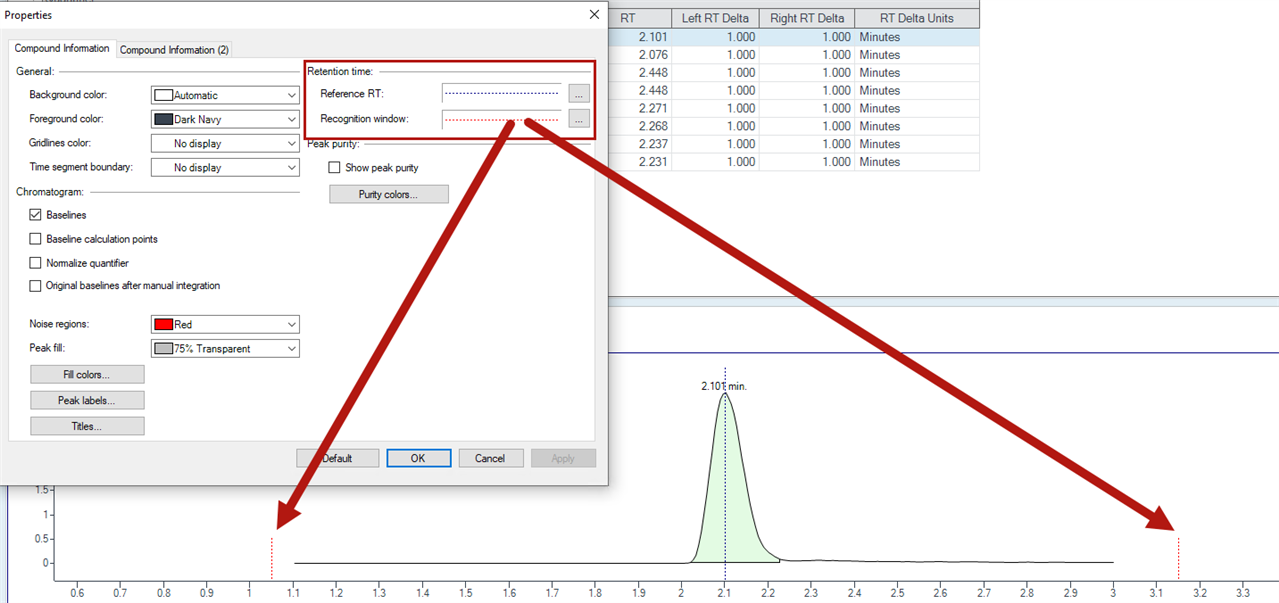In Quant, there are at least 3 retention time related settings: Left/Right RT delta in RT setup, then Non Reference window and Reference window in Globals setup.
When using only the RT deltas to review integrated data in the compound information pane, using narrow RT deltas can make the compound view narrow and can leave peaks distorted. For some non-MS data, it can be helpful to see a wider range (ex. window = 1 min). This can be achieved by increasing the RT deltas.
However, when increasing the RT deltas, the integrator might select the wrong peak: ex., integration for compounds eluting adjacent to a surrogate may incorrectly select the surrogate, requiring manual intervention. In this case, tightening the deltas is not a suitable solution. After some experimentation, the integrator does appear to become more selective by decreasing the reference window % values rather than RT deltas, and seems to increasingly integrate peaks that more closely align with the compound's set retention time (which is good).
I would like to understand this behavior better to set up MassHunter to allow for a broader view of the chromatogram when scrolling through compounds in the compound information pane while still retaining selective integration based on RT for non-MS data.
Does anyone have any documentation or experience that can describe the functions and difference between "Reference Window" and "Non Reference" Windows relative to RT delta, and if this application is correct? As a bonus, there is even an RT window setting that I can't find documentation on either.
Thank you!

